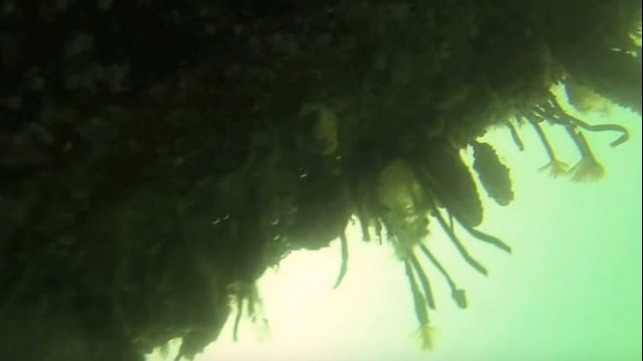New Zealand Issues Biofouling Guidance

In March last year, the bulk carrier DL Marigold became the world's first biofouling “casualty.” The vessel was ordered from both New Zealand and Fijian waters for being an invasive species threat, after divers discovered dense fouling of barnacles and tube worms on the ship's hull. It was the first time an international ship had been ordered to leave a New Zealand port because of biofouling.
Now New Zealand's Ministry for Primary Industries (MPI) has released guidance on how international vessels can comply with the nation's strict new biofouling rules. Next month, New Zealand will become the first country in the world to introduce a nationwide standard for biofouling. From May 15, all commercial and recreational vessel operators will have to show they have managed biofouling on their vessels before they enter New Zealand waters.
A new guidance document to accompany the standard has just been released on the Ministry's website along with a guidance document for developing customized Craft Risk Management Plans on the MPI website. The management options are:
a) Cleaning the hull within 30 days prior to arrival and providing MPI with documentation of that clean; or
b) Conducting continual hull maintenance using best practice principles, such as IMO biofouling guidelines, and providing MPI with documentation of that management; or
c) Conducting hull treatment using an MPI-approved provider within 24 hours of arriving and providing MPI with documentation of the scheduled treatment.
The majority of biofouling is usually found in the niche areas such as sea chests and pipework protected. The Ministry says that to avoid on-arrival delays, operators should carry documentation and records showing that the vessel is regularly inspected and clean areas that require it. Management may include operation of marine growth prevention systems, chemical dosing and inspection of strainers.
The guidance notes that there are limited options for dry docking and cleaning for commercial vessels within New Zealand, so if the vessel does not comply with the biofouling standard on arrival, it may be directed to leave to be cleaned elsewhere.
“We understand that not all vessels will be able to meet the compliance measures outlined in the standard. Craft Risk Management Plans allow these vessels to develop a more tailored compliance plan to manage the biofouling,” says Paul Hallett, Biosecurity and Environment Group Manager at the Ministry. “We expect vessels with unique operating profiles, such as cruise ships and fishing vessels, will most likely use this option.”
The Ministry will assess the biofouling risk of the vessel prior to its arrival based on documents supplied by the operator. “We’ll be looking for evidence of continual maintenance, cleaning, or treatment to verify the vessel complies with the new rules,” says Hallett. “Vessels that are unable to comply with the new regulations may have their schedules interrupted or restricted, or even face the possibility of being directed to leave New Zealand territory. “These measures will all be at the expense of the vessel owner or operator.”
